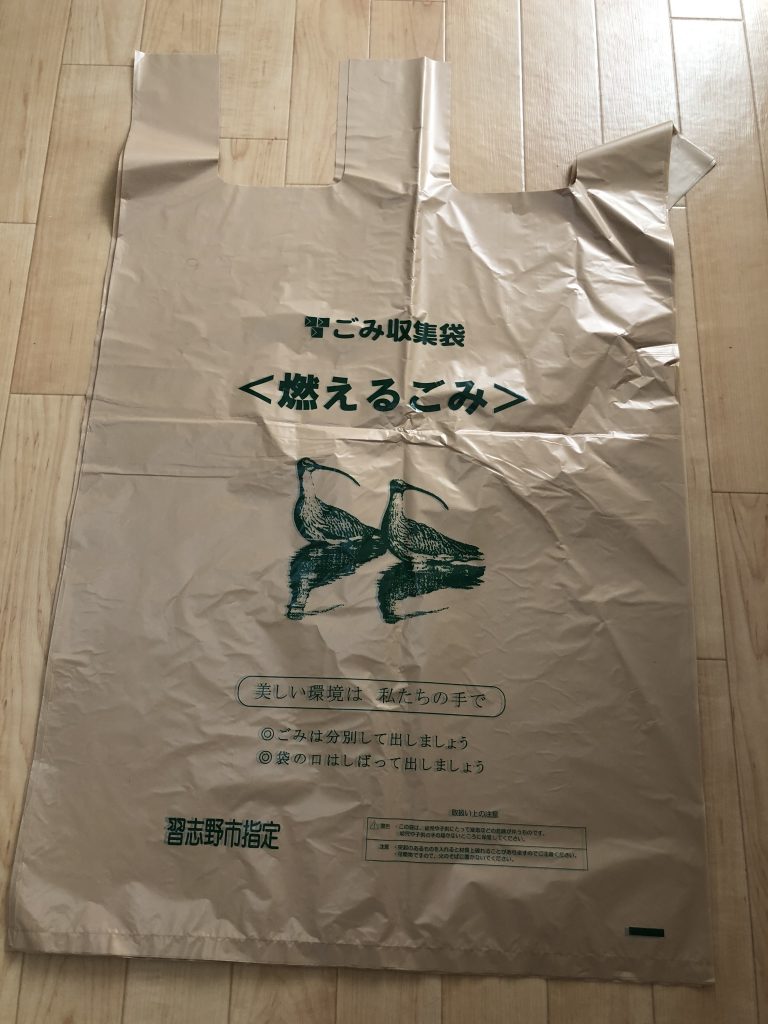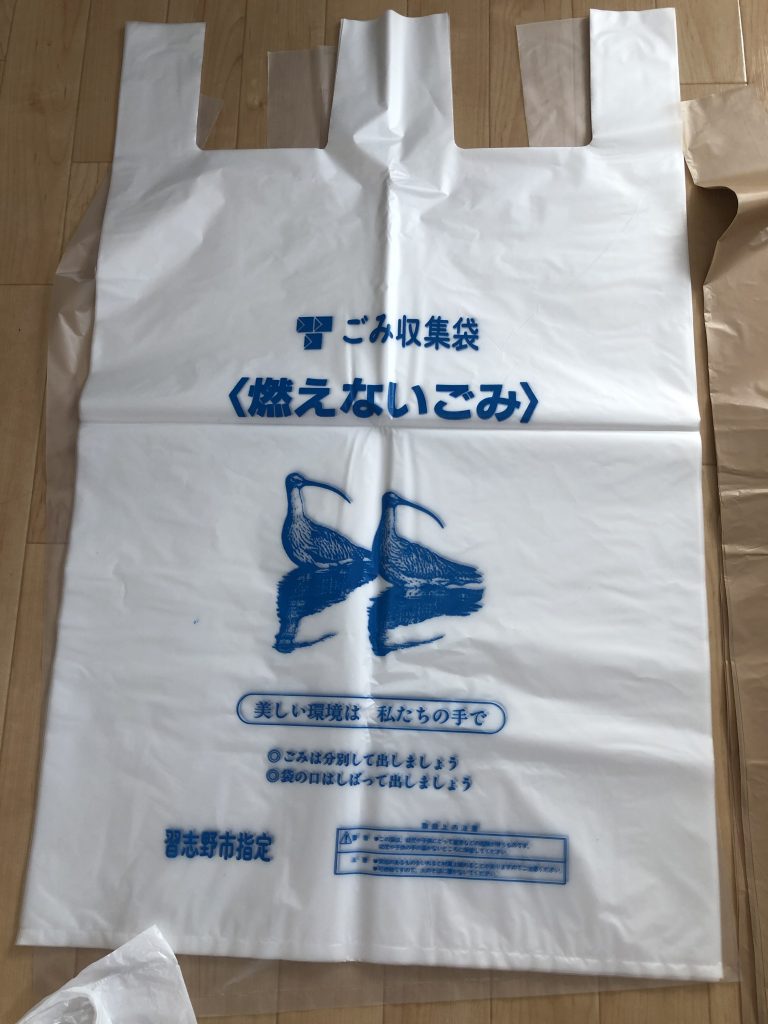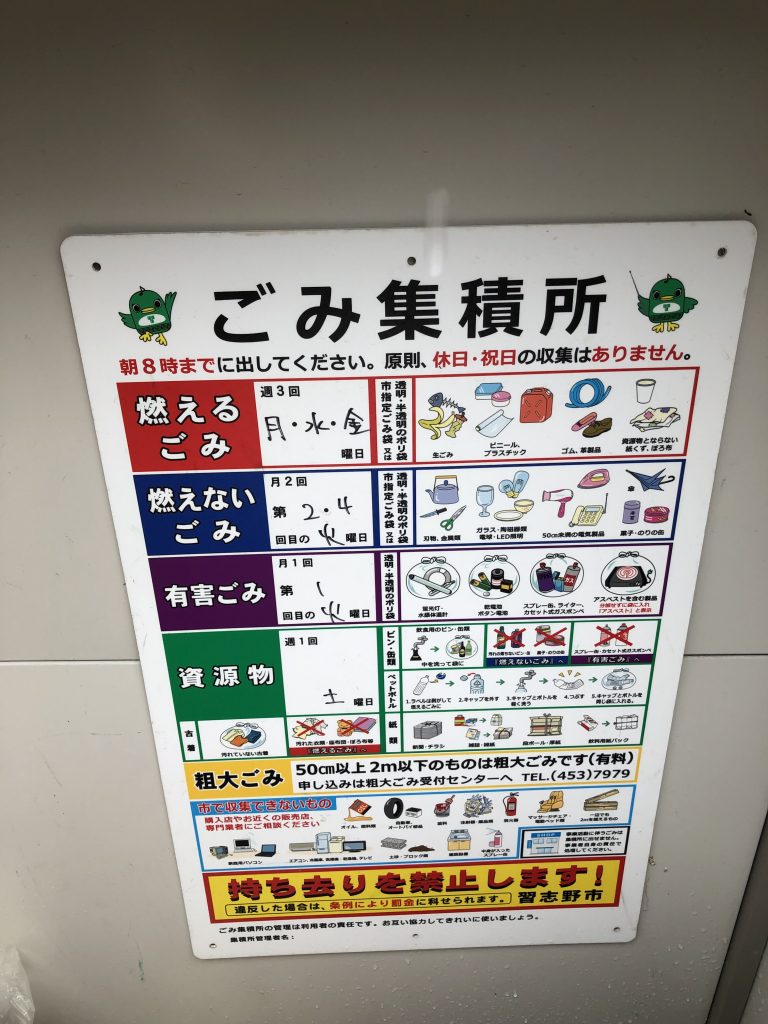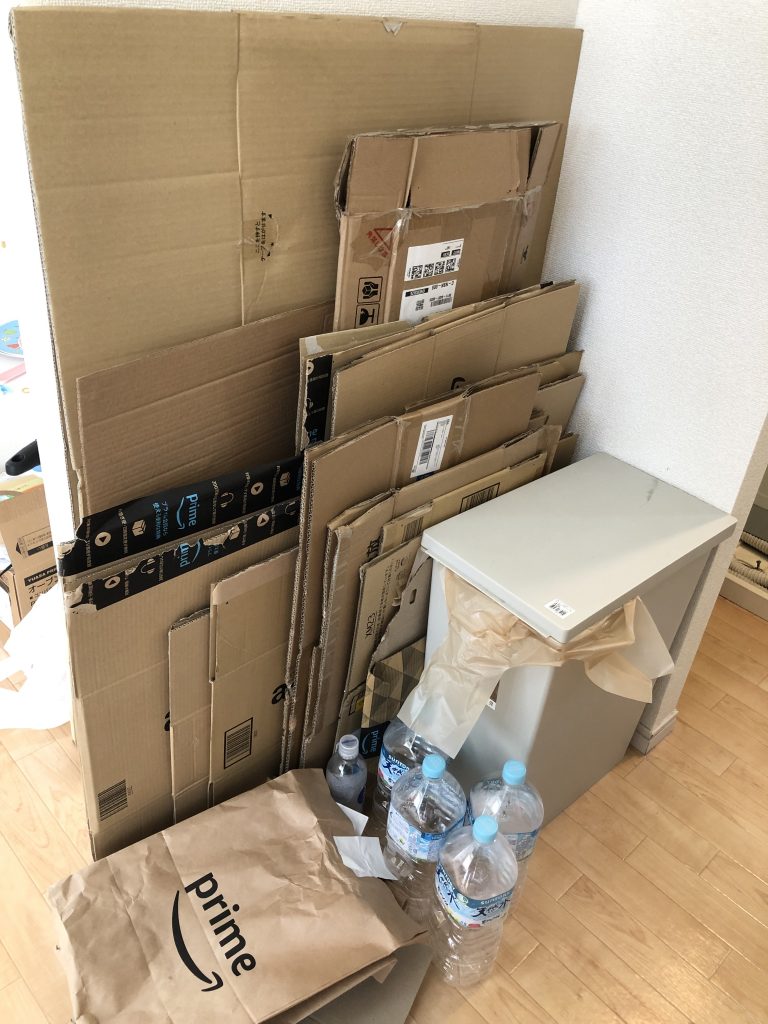Talking Trash
As promised, I would like to bring you information I have learned regarding waste disposal! It is important to note that rules can vary depending on municipality, but the general guidelines are largely the same.
Simply put, trash is divided into four categories: Burnable, Non-Burnable, Recycling, and “Hazardous”.
Burnable: Food waste, paper products, plastic food containers and wrappers, etc.
Non-Burnable: metal objects (like kitchen utensils), ceramic dishware, lightbulbs, smaller electronic devices, etc.
Recycling: Plastic bottles (called PET bottles in Japan–shorthand for polyethylene terephthalate), cardboard, papers, cartons, etc.
Hazardous: Batteries, gas containers, and other flammable items.
There are designated trash bags that are used to keep these categories separate. They vary depending on municipality, but they are easy to find at convenience and grocery stores if you ever find yourself in need of one. Bask in the glory of Narashino’s trash bags:

Burnable Bag 
Non-burnable bag (Because it is white and clear, I can use this for
recycling, as well).
Bags must be brought to the dumpster before 8 AM on the day of collection, and it can be bad form to bring it out the night before. Trash of each kind is only picked up on certain days of the week and month, as well. Here’s a handy diagram found in the lid of my dumpster:

Non-burnable: Twice a month, weeks 2 and 4 – Tuesday
Hazardous: Once a month, week 1 – Tuesday
Recyclables: Every week – Saturday
The collection of recyclables is the most difficult part for me as an American (that hasn’t had much experience with recycling). My brother has set up an intricate plastic bottle recycling scheme back home, but Japan’s protocols are even more complex.
PET bottles must have their wrapper removed and placed in Burnable trash. The caps are removed and put into a clear plastic bag along with the bottles after a thorough rinse. Other plastic bottles, like containers for cooking products, go through the same process. Papers, magazines, and the like are to be put in a paper bag or tied up with twine. In addition, cardboard and cartons are broken down and tied up with their own sets of string. These items may not be picked up in rainy weather, as the rain can turn it all to mush.
Small electronic devices, like cell phones or hairdryers, can be disposed of at specific collection boxes at various public facilities (City Hall, community centers, etc). Any items discarded this way must have their batteries removed and fit in the collection box. Larger pieces of furniture and electronics, like old laptops or air conditioners, must be disposed of by appointment. I have not looked into this process, as I’ve been bringing furniture into the apartment rather than throwing stuff out, but contacting specialized services seems to be the way to go.

Other than that, trash collection in Narashino is actually rather simple! Luckily, my municipality is not overly strict concerning these rules, though some other places can definitely be more rigid! I started my research process with quite a bit of confusion, as plastic food containers always seemed recyclable to me, and I wasn’t sure if that meant I had to wait to throw them out with the rest of the recyclables on Saturdays (talk about a yucky waiting period). My senior ALT was able to clear it all up for me, though! Special shout out to Duncan and all of my pen pals that received various “But what about ____?” messages from me!
While it hasn’t happened to me yet, breaking any of the above rules could result in your trash being left behind. I’ve also read accounts of neighbors coming over to point out mistakes and then helping explain the protocols so that the new resident understands everything properly. Here’s hoping I can keep my trash record–and apartment–clean!
For more information about Narashino’s rules and regulations, I found an English PDF with the updated rules for 2021! It includes contact information for oversized waste collection services, as well. Click here if you’re interested!